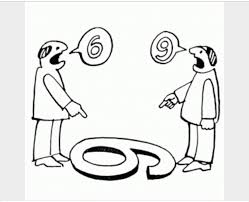The contributions of psychology to the world of business are numerous. Organizational psychology, work psychology, and even behavioral and cognitive therapies are real enrichments for companies and managers.
The term « cognitive distortion » was introduced by Aaron Beck, a psychiatrist, in the 1960s. The notion of cognitive bias, which is a synonym with a more extensive definition, was proposed by psychologists Amos Tversky and Daniel Kahneman who wanted to enrich Beck’s research in the 1970s.
Cognitive distortions or biases refer to an error in processing information from the environment. This results from automatic thoughts rooted in the reptilian brain, that is, the primitive part of our nervous system. This process can lead to negative emotions and even significant psychological suffering, which can, according to Beck, lead to the development of anxiety and depressive disorders.
Cognitive biases are therefore the direct consequence of limiting thoughts that distort our judgments of the world, others, and ourselves, thus preventing us from realizing our full potential. These thoughts are very difficult to deconstruct, however, knowing them well allows us to better identify them when they appear and thus to question them in order to reduce their impact on our daily lives.
There are 250 cognitive biases currently listed in six different categories:
– Sensory-motor biases;
– Attentional biases;
– Mnemonic biases;
– Reasoning biases;
– Personality-related biases (related to cultural and linguistic aspects);
– Emotional biases (due to affect and not intellect).
Here are some examples of cognitive biases to better understand their concrete applications:
– The illusion of knowledge
Relying on beliefs and not facts without seeking more information or questioning oneself.
– Selective abstraction
Retaining only one detail about an event or person and therefore considering it from that single element.
– Arbitrary inference
Drawing conclusions about people or events without tangible proof.
– Dichotomous reasoning
Thinking in all or nothing, anything that is not completely positive necessarily becomes negative.
– Emotional reasoning
Considering one’s own emotions and feelings as tangible evidence.
– Labeling
Categorizing individuals or events definitively from a single piece of information.
– The illusion of superiority
Feeling like one is acting better than others, for example, doing one’s job better than one’s colleagues, without this being attested by objective facts.
– Error immunity
Minimizing or ignoring one’s own mistakes.
– Confirmation bias
Giving priority to information and facts that confirm one’s beliefs and pre-existing hypotheses, while ignoring those that would contradict them.
As you can see, cognitive biases often lead individuals to see things in black and white and limit their field of vision. and their actions by making poor decisions. Indeed, they do not encourage the development of one’s imaginative abilities or thinking outside the box, to reinvent oneself. This is even more pronounced in the business world, which is constantly evolving and in the face of the information flows to which we are exposed, the wrong decision can have serious consequences.
However, it is not a question of disregarding one’s intuition, which can sometimes prove to be lifesaving. Rather, it is about developing a critical mind about one’s own reactions and questioning their origins in order to refocus on facts and build new thought patterns and make informed decisions, thus opening up new opportunities.

